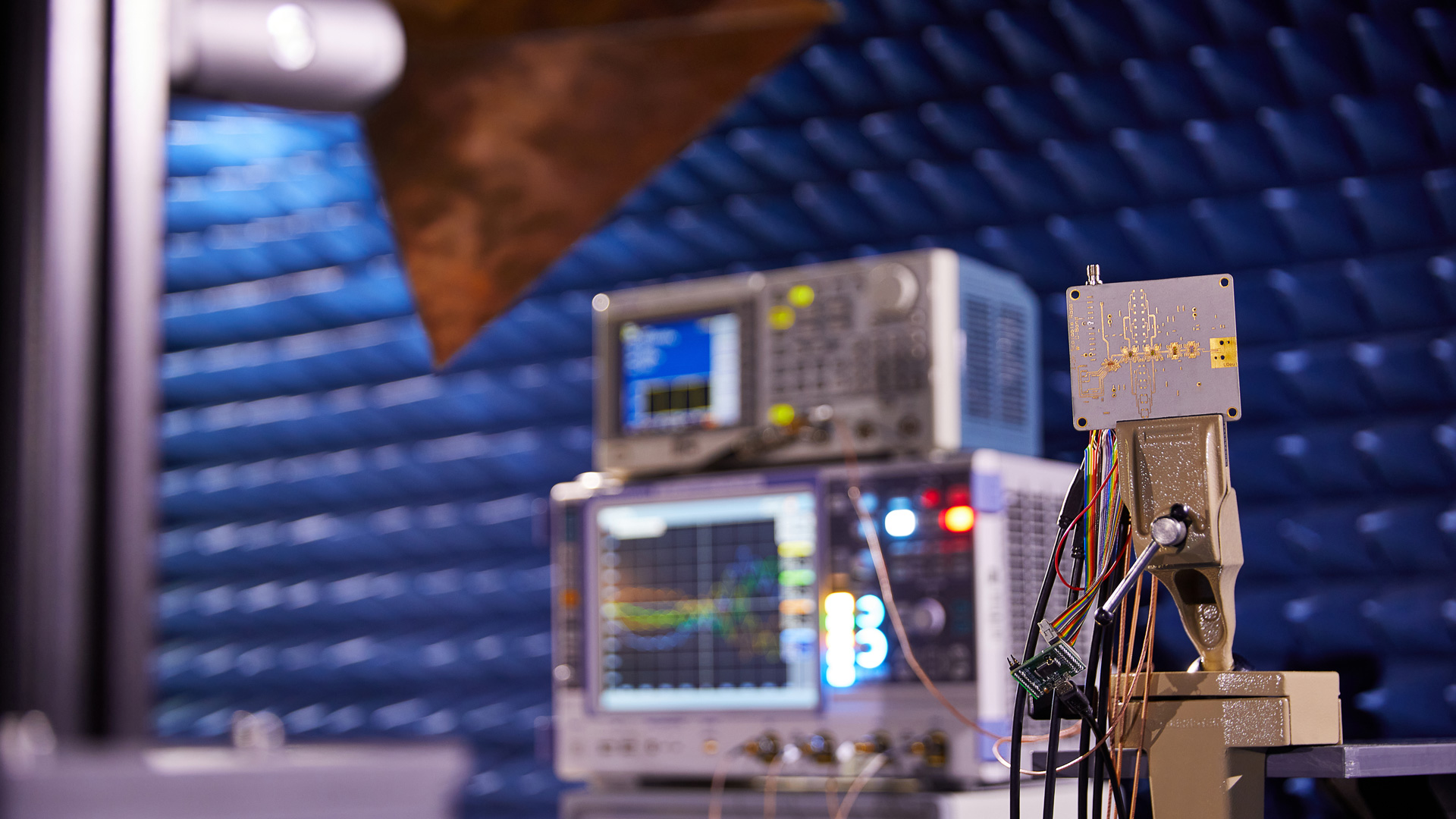One important key activity within the program RF Circuits is the realization of integrated millimeter-wave circuits. In particular, transmit and receive circuits as well as frequency synthesizers with operating frequencies up to 720 GHz are in the focus of the research and development activities, all based on the IHP in-house SiGe BiCMOS processes.
In the future, radar sensors shall enable robust and high-resolution systems as well as novel innovative applications in the area of contactless sensing and multidimensional surround scanning with a high level of miniaturization. In order to provide transceiver frontend circuits for many applications ranging from single radar sensors up to multiple-input multiple-output (MIMO) systems, a platform with cascadable radar-ICs was developed. The portfolio contains transceiver ICs targeting operation frequencies from 60 - 256 GHz. Starting at frequencies of 120 GHz on-chip antennas (typically folded dipole antennas) can be integrated allowing very compact and cost effective solutions for distance and angle measurements.
New antenna concepts with dedicated radiation patterns have been developed for on-chip integration. Special modulation techniques together with the corresponding baseband signal processing allow spatial resolution in micrometer range, which may cover new application fields in medical technologies or in human-machine interaction interfaces.
The continuing technical exploration of the THz regime in circuit design increasingly enables applications in the area of spectroscopy and sensing for material characterization. The activities are still focused on the on-chip integration of micro-fluidics, nearfield sensors and readout electronics aiming for highly compact and cost effective lab-on-chip solutions. One on-going activity is the development of integrated circuits for analysis of the human breath by gas spectroscopy at frequencies of 220 - 270 GHz. Recently, bow-tie-antennas were integrated on-chip, which provide a considerable improvement of focusing the beam in combination with Si lenses at the backside of the IC. The overall sensitivity of the system was significantly improved. Currently, the introduction of a second band at twice the frequency (440 - 540 GHz) is under development, which will further increase the variety of applications.
Main targets
- circuits for mm-wave wireless communication systems
- circuits for sensing systems for mm-wave to sub-THz frequency range
- RF to millimeter-wave biosensors
- circuits for hetero-integrated SiGe-InP chips
Research topics
- dielectric sensors
- Sub-THz spectroscopy circuits
- millimeter wave radar circuits
The main focus of the mm-wave wireless group is the development of state-of-the-art mm-wave to sub-THz circuits for communication and sensing applications. This includes complete multi-channel transceiver chips with features such as beam-steering and/or on-chip integrated antennas, as well as specific high performance building-blocks such as LNA, PAs, etc. or larger blocks such as frequency synthesizers. The group is also involved in designing circuits for hetero-integrated SiGe-InP chips. A further central aspect is the exploration of the higher frequency ranges and their potential applications, like radar based high resolution imaging. In the field of sensing, highly integrated transceivers for radar systems and gas spectroscopy applications are among our main activities. In addition, we are developing integrated biosensors for cytometry applications and tissue characterization based on near-field permittivity sensing.
Research results
- 245 GHz data transmission
- with external lenses
- integrated receiver with on-chip antenna
- 245 GHz front ends for gas spectroscopy
- with external lenses
- ~1 m transmission distance
- 0.5 THz Transmitter / Receiver
- ~ -13 dBm at 490 - 500 GHz
- X-band sensor arrays for micro-imaging of bio-materials
- based on capacitive sensor
- Ka-band biosensor for integration in catheters intended for plaque characterization
- detection of fat and calcium fractions in water and blood
In the area of nearfield sensors for biomedical applications a new glucose sensor was demonstrated in the lab, which shows promising test results compared to reference measurements. This and other solutions developed within the project NexGen have the potential to alleviate the lives of care-requiring persons. The project received the CATRENE Innovation Award 2019 for its future-oriented results. The work will be continued to allow an exploitation of the research results in a long-term prospective.




